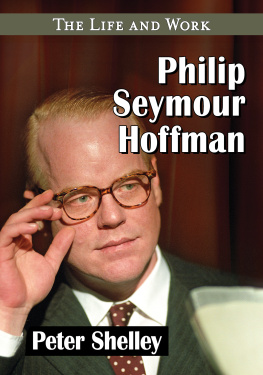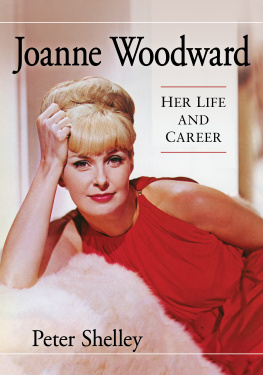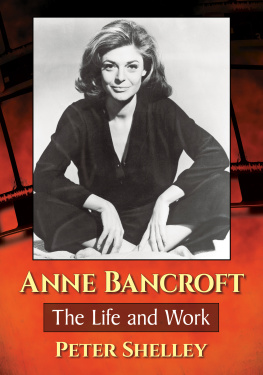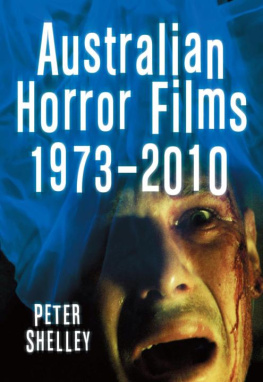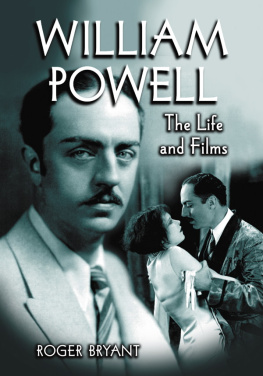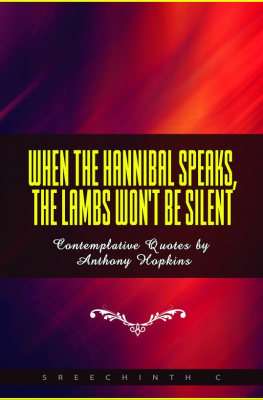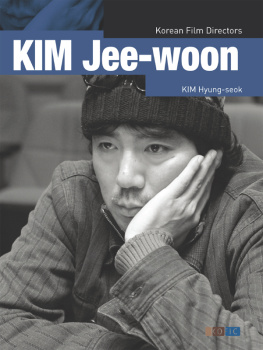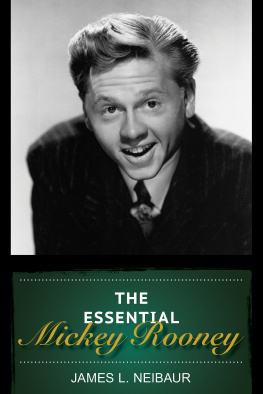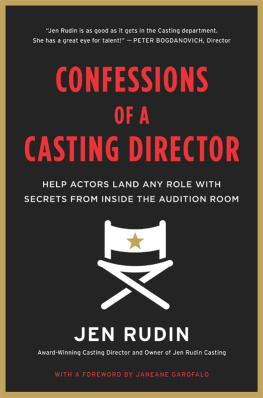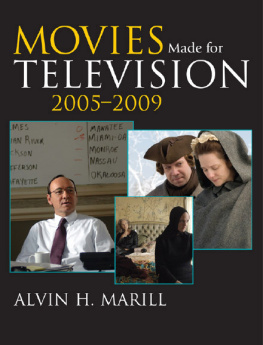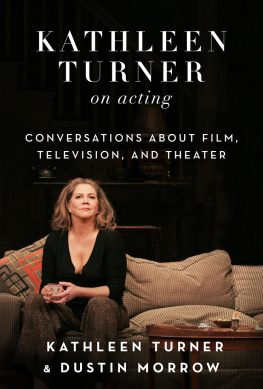
Also by PETER SHELLEY
AND FROM MCFARLAND
Neil Simon on Screen: Adaptations and Original Scripts for Film and Television (2015)
Gwen Verdon: A Life on Stage and Screen (2015)
Sandy Dennis: The Life and Films (2014)
Australian Horror Films, 19732010 (2012)
Jules Dassin: The Life and Films (2011)
Frances Farmer: The Life and Films of a Troubled Star (2011)
Grande Dame Guignol Cinema: A History of Hag Horror from Baby Jane to Mother (2009)
Philip Seymour Hoffman
The Life and Work
Peter Shelley

McFarland & Company, Inc., Publishers
Jefferson, North Carolina
e-ISBN: 978-1-4766-2572-0
LIBRARY OF CONGRESS CATALOGUING DATA ARE AVAILABLE
BRITISH LIBRARY CATALOGUING DATA ARE AVAILABLE
2017 Peter Shelley. All rights reserved
No part of this book may be reproduced or transmitted in any form or by any means, electronic or mechanical, including photocopying or recording, or by any information storage and retrieval system, without permission in writing from the publisher.
On the cover Philip Seymour Hoffman as Truman Capote in Capote, 2005 (Sony Pictures Classics/Photofest)
McFarland & Company, Inc., Publishers
Box 611, Jefferson, North Carolina 28640
www.mcfarlandpub.com
Preface
When the news came that Philip Seymour Hoffman had died on February 2, 2014, it was shocking. It wasnt just that we had lost another movie star to a drug overdose. The actors history of addiction was known and there had been reports that he had slipped back in the months prior to his death, which made the cause of his demise less surprising. The shock of it was more that Hoffman had suddenly left us, since he had been visible in movies and on the stage for more than two decades.
In commercial films and art house fare, Hoffman was always there, but now he was gone. He left behind a body of work that Rolling Stone said was a tribute to his struggle for excellence and a restless need to create and work. He had 55 theatrical and television movies to his credit. The word genius was used by some to describe him. One of his friends called him a genius because he committed without prejudice, believed wholeheartedly and toiled tirelessly and without restraint, and was always pushing, pushing, pushing toward the edge, wherever that was.
If the actors death at age 46 lacked the mythic resonance of others like James Dean, Marilyn Monroe and River Phoenix who had also died too young, the reason might have been that Hoffman was not a traditional movie star. His career trajectory may have been a sign of the new era in movies where stars moved between leading roles and supporting roles, and also worked in television. But Hoffman did not present as a movie star. He didnt have the same glamour appeal as contemporaries Brad Pitt and George Clooney, two actors he had played in support of. Hoffman was known more as an actors actor, who could steal scenes from anyone without showboating because he was just so good. He was often described as one of the best of his generation.
Hoffman could play tragedy and farce, do period and contemporary parts, do accents, cut and dye his hair, and gain and lose weight. He even danced and sang in Along Came Polly and The Master. But as no actor can play everything, he also had limitations. These involved his portly physicality and an emotional restriction where he could play anger and rage well but tears were more difficult to produce. Hoffmans appetites seemed to make it hard for him to stay fit, particularly as he aged. His blonde hair turned white, not gray, with age, which was an advantage. But while Hoffman could be a mannered performer, overusing hand gestures and self-conscious touching and a raucous laugh for enthusiasm, he always seemed truthful. You were aware that he was acting but you didnt mind so much because you believed him. He had technique but unlike, say, Meryl Streep, another star he supported, you didnt resent it.
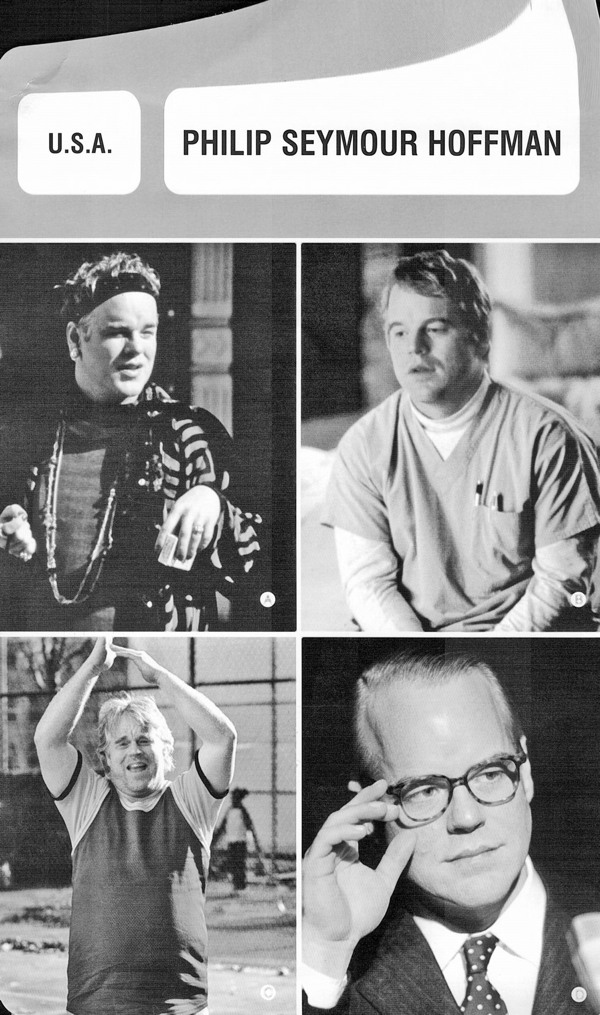
French movie card showing Hoffmans different looks in, from left top,Flawless(1999),Magnolia(1999),Along Came Polly(2003) andCapote(2005).
Hoffman was brave. He had no movie star vanity and was prepared to look silly and be humiliated. Think of how he sharted himself in Along Came Polly. This may have endeared him forever to teenage boys but might otherwise have haunted the reputation of someone who wanted to be perceived as a serious actor. His apparent affinity for outsiders provided him with parts that few movie stars would have attempted. He played gay men more than once, as well as a transgender person, a chronic masturbator and obscene telephone caller, gamblers, substance abusers and alcoholics. Perhaps what helped the actor was that he had an Everyman quality that allowed audiences to access characters that could be unattractive. Hoffman was known to be generous and unassuming about his own talent in real life that helped, even when he was playing unattractive people.
As an actor he could be sensitive but also loutish. His best roles were a combination of the two, where he had both introverted and extroverted characteristics. The actor was smart enough to pick roles that had dimension, even when the dimension may have appeared to be slim, as in Mission: Impossible III. That film demonstrated that Hoffman could do villains, but it also showed how he had the business savvy to alternate between commercial and art house projects. One might question some of his commercial choices; his appearances in the Hunger Games movies towards the end of his career are suspect since they offer such unchallenging work. However, apart from the continued visibility they gave Hoffman, they also no doubt helped him to maintain a box office cache for other projects and also perhaps supported the work of his film company, Coopers Town.
Hoffman wasnt a traditional leading man. His one attempt at playing one, in State and Main, was unsuccessful. If he had a romance on screen, it was not a traditional romance, and if he was shown to have sex, he was not a Don Juan. When Hoffman was naked on screen, it wasnt so we could ogle his body. His leading man roles were more character parts where he was preoccupied with his work or recreation rather than his leading lady, if he had one. And if he did, she was either a marginal character, or as in Jack Goes Boating she was as untraditional as he.
Ethan Hawke said that Hoffman was an unconventional movie star in an era where there was no such thing as unconventionality. According to Hawke, nowadays everyone was gorgeous and had abs, and you had Hoffman standing saying, Hey, Ive got something to say, too! It may not be pretty, but its true. Hawke added that was why the world needed the actor so badly. Hawke would also comment on Hoffmans ascendance to leading man roles with Capote (2005), saying he graduated from being promising and interesting to being in complete control of a very complicated part. He had grown up.
I first noticed Hoffman in his heartbreaking breakout role in Boogie Nights (1997). His Scotty was vulnerable and self-conscious but self-aware enough to know how he had miscalculated in making a pass at a heterosexual man and regretting it. It was a supporting part but it made an impact and led to better things. Hoffmans
Next page
